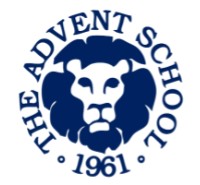
The Advent School promotes affinity groups that segregate faculty and students by race; 2nd graders taught about picking their pronouns
Incidents
The Advent School in Boston has a page online titled “Diversity, Inclusion & Belonging.” The school states on the page: “We define Social Justice as the active participation of all people in a society to equitably value and meet the needs of all individuals and communities.” To achieve its goals, the school explains that “the ongoing and necessary work toward this goal must be deeply democratic, recognizing social inequities and redistributing power.” The school also promotes “affinity spaces” on this page for students, families, and faculty. Affinity spaces are groups of people segregated by their characteristics, such as race and sexual orientation. The school explains:
In addition to joining the Board of Trustees Diversity Committee, Advent families can join affinity groups like the Families of Color Affinity Group. Faculty participate in race-based affinity groups and can join the Social Justice Task Force. The Task Force is a multi-year working group of faculty and staff members who create curriculum scope and sequence to support teachers.
The school additionally explains that “students can join an affinity group including an LGBTQ+ space and students of color affinity group” and that “faculty members facilitate these groups.” The school then states that “new affinity groups can be added or expanded based on the needs and make-up of the School community.”
This page also features the school’s “Diversity Statement.” The school explains: “The Advent School was founded in 1961 as an urban school whose community reflects the diversity of Boston. We continue to embody this mission through ongoing and intentional work to create a diverse, inclusive community and advocate for more equitable, anti-racist mindsets, actions, and outcomes.” The school then provides the following commitments:
- Inspire our students, faculty, families, staff, and community to explore, appreciate, and embrace the multicultural world in which we live.
- Learn from each other and celebrate our differences by engaging in respectful, developmentally appropriate, and challenging conversations about our experiences and those of our neighbors.
- Develop our understanding of marginalized and oppressed groups and continue to learn about their histories, realities, and futures.
- Foster an environment that prepares and empowers our students to be agents of change.
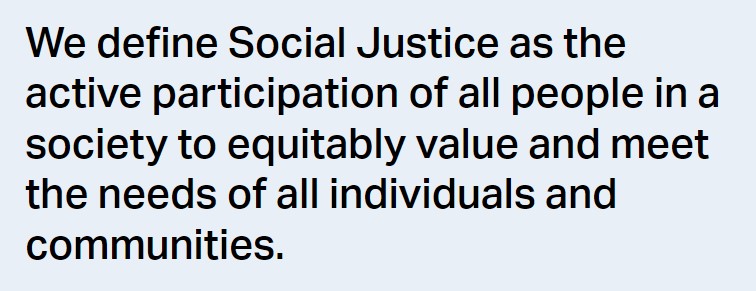


The school district’s homepage has a link titled “Social Justice Mission.” The link explains that a goal of the school is to turn students into political activists: “Engaging students as active participants in their learning is an act of social justice. We listen to and build relationships with students, making them aware that their ideas are important and central to changing our world for the better.” The link directs the website’s visitors to a page titled “Pedagogy, Practice & Principles.” This page outright explains that “students are independent investigators who learn to think critically, ask questions, and advocate for themselves and others.”
The school then links to a book that it uses to help develop curricula for students. This book is titled Anti-Bias Education for Young Children and Ourselves, Second Edition. Topics in this book include:
- The Language of Equity and Diversity
- It Takes a Village
- Why Do We Need Anti‑Bias Education?
- Dominant Culture and Cultural Diversity
- The Four Core Goals of Anti‑Bias Education
- Personal and Social Identity
- Guidelines for Your Curriculum
- The Hurtful Power of Silence
- Holding Conversations with Children About Anti‑Bias Issues
- When Some Families or Staff Disagree with Anti‑Bias Activities
- Curriculum Guidelines for Nurturing Children’s Cultural Identities
- Development of Children’s Ideas and Attitudes About Racialized Identities
- The Big Picture: From a Binary to a Multifaceted Understanding of Gender
- Development of Children’s Ideas and Attitudes About Gender
- Children’s Understandings of Family Structures



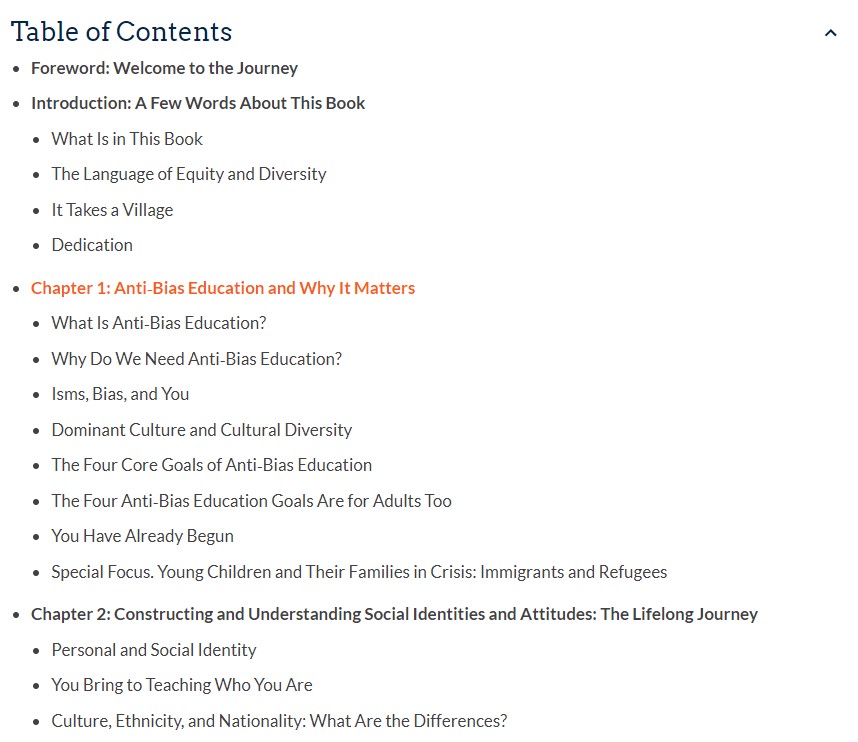
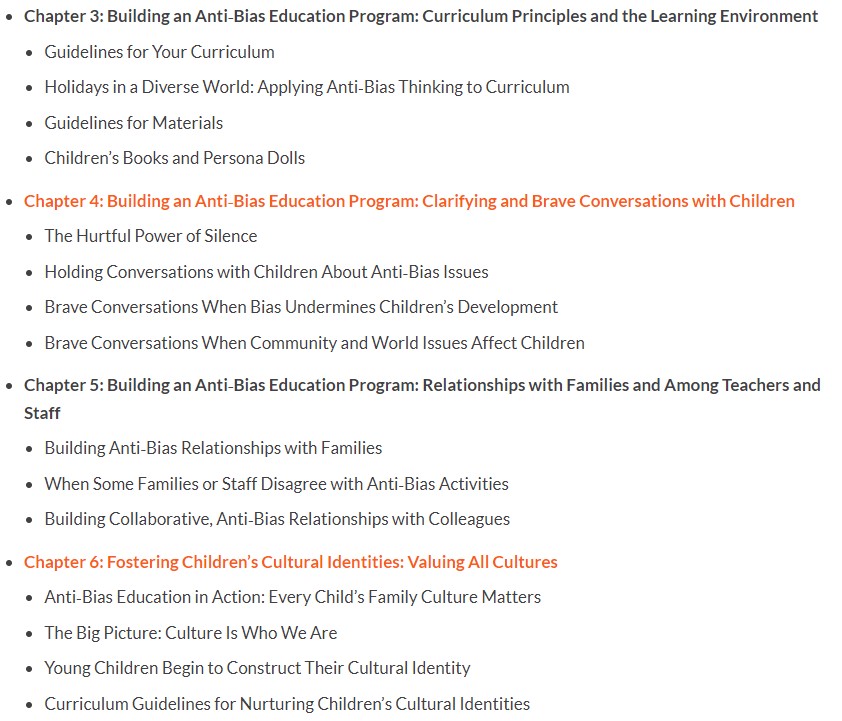

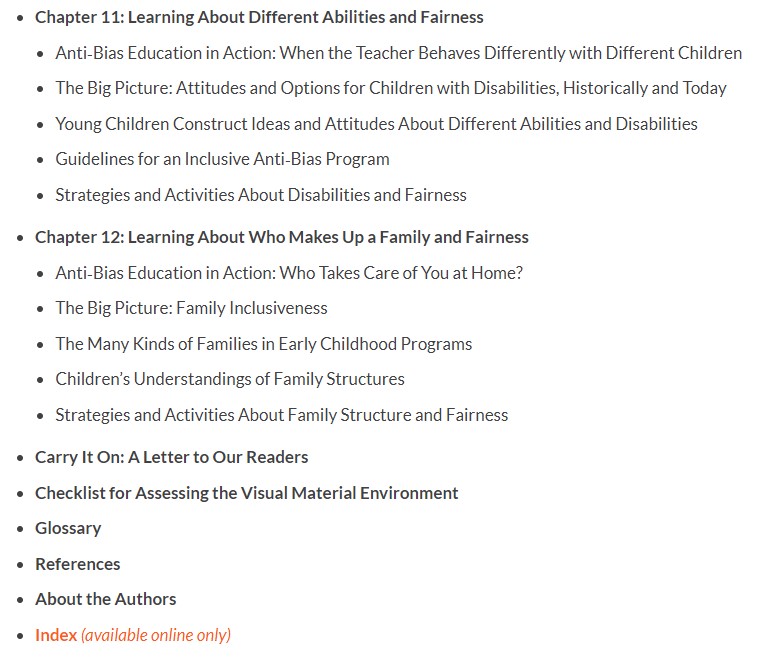
The Advent School explains that teachers participate in three-year cycles of training that include demonstrating a “commitment to social justice.” Teachers participate in training that includes the following four elements:
- Element 1: Advent teachers are active members of an urban school community that reflects the diversity of Boston and creates a culture of collaboration where every child has the confidence to take action in a connected world.
- Element 2: Advent teachers create and execute a forward-thinking curriculum.
- Element 3: Advent teachers inspire and engage a child’s passion for learning.
- Element 4: Advent teachers demonstrate a commitment to social justice.

The school is currently hiring a pre-kindergarten teacher. The school’s job opening explains that its “program promotes progressive, hands-on, project-based teaching that interweaves the arts, academic skills, and social justice themes.” A required characteristic for a potential teacher in this position is to be “an advocate for anti-bias teaching, both for children and adults.” The same requirement also applies to potential fifth and sixth grade teachers.
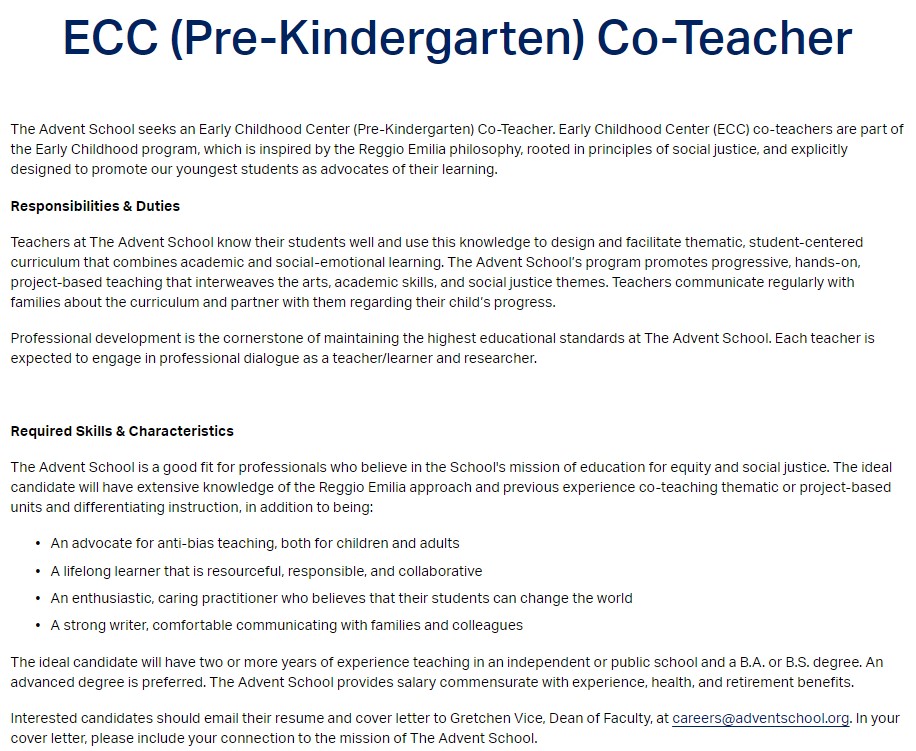
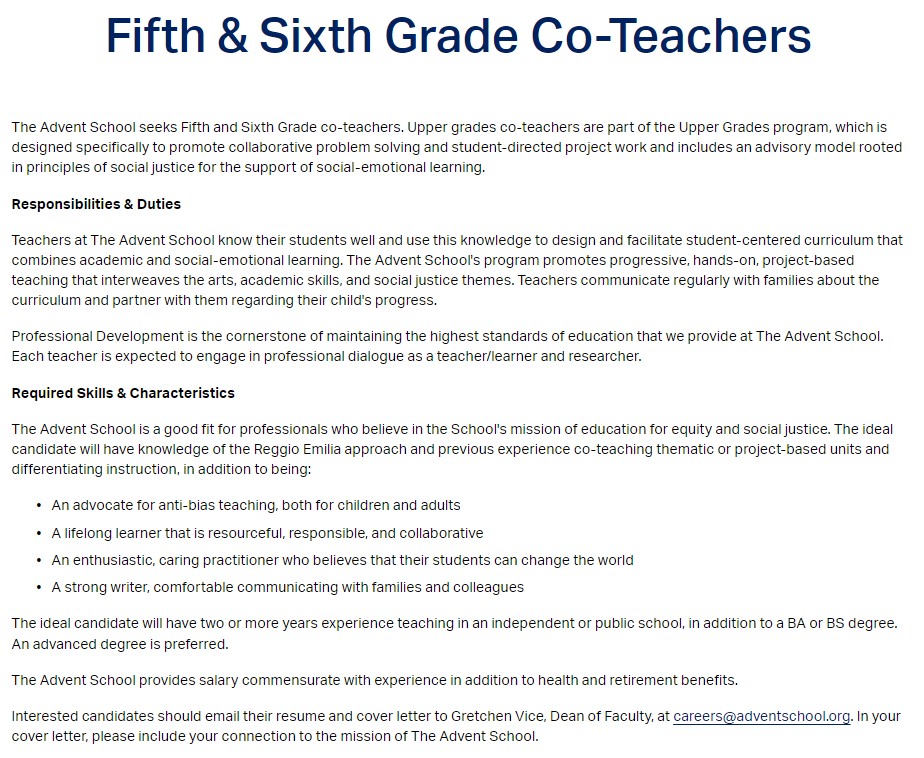
The school’s website has several blogs promoting social justice education. One blog is titled “Second Grade’s Gender Study.” The school explains in the blog: “Students explore social justice topics, beginning with an exploration of identity and uniqueness. Students also learn about changemakers who challenged gender expectations and helped fight for LGBTQ+ rights.” The school continues to explain in the blog that the second grade students “are introduced to the gender spectrum and the gender identifiers cis, trans, and non-binary as well as various pronouns.” The school then states that “it’s important to understand that some people feel comfortable with more than one set of pronouns, for example she series and they series, while others prefer only one, and that some folks preferred to be called by their name.”
The school further states that teachers help guide students on the issue of gender identity: “Advent faculty work to make sure students have the opportunity to understand the feelings they may be having about their gender.” Second grade students in the school also participated in a game called “Playing with Pronouns.” This is a card game that attempts to teach young children that they can pick their preferred genders and pronouns.




In another blog titled “Black History Month Resources,” the school provides teachers with resources to implement the Black Lives Matter movement into classrooms. The school provides resources from the organization “Black Lives Matter at School” as a part of the organization’s “Week of Action.” The organization Black Lives Matter at School is known for its “13 Guiding Principles.” These principles include being “trans affirming” and creating “black villages.” The organization explains for “trans affirming” that “we are committed to embracing and making space for trans siblings to participate and lead.” Creating “black villages” involves “disrupting the Western-prescribed nuclear family structure.”
The school also promotes a resource from Learning for Justice in the blog. The organization Learning for Justice is known for pushing its “Social Justice Standards” to be adopted in schools throughout the country. The document for these standards includes goals to achieve for students. One goal is that “students will develop language and historical and cultural knowledge that affirm and accurately describe their membership in multiple identity groups.” Another goal appears to outright state that the purpose of the “Social Justice Standards” is to turn students into political activists: “Students will make principled decisions about when and how to take a stand against bias and injustice in their everyday lives and will do so despite negative peer or group pressure.”
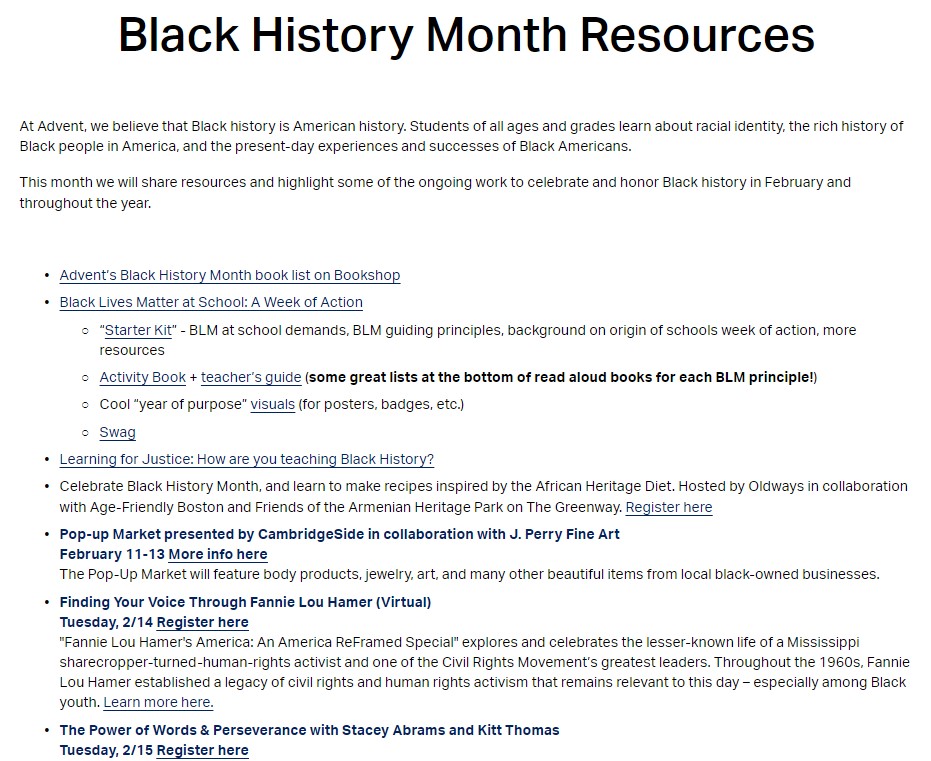
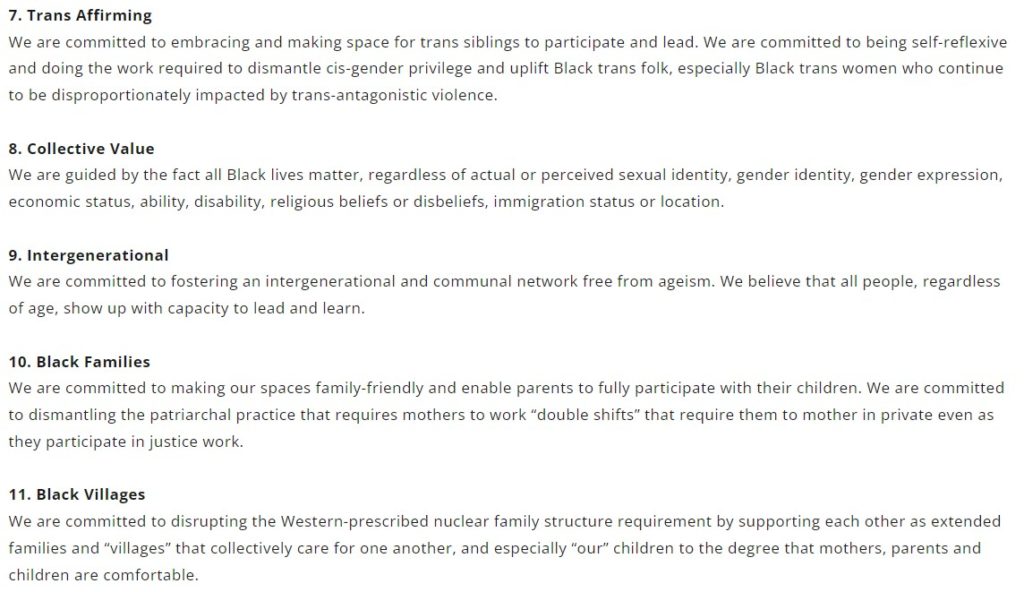
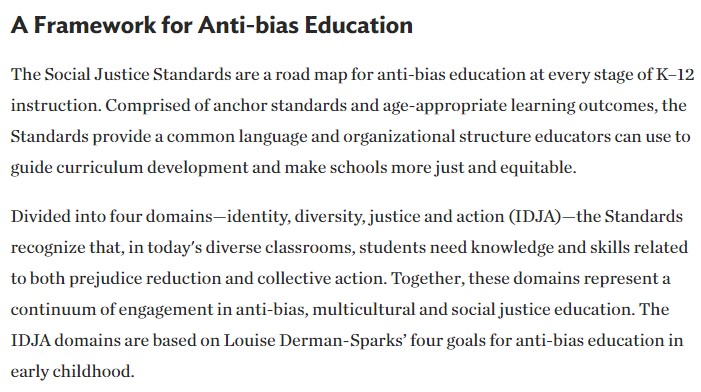
The Advent school has another blog posted online titled “Talking about Race at Home.” The blog discusses how the school hired the consulting firm Chap Equity to push the idea of promoting “racial, ethnic, and cultural identities” to children with parents and teachers. While parents were at the event hosted by the consulting firm, the school mentioned that the organization Little Uprisings provided child care and hosted a workshop for the children titled “Rights, Justice, Action: How to be an Antiracist Kid.” Little Uprisings explains on its website that the organization intends to help “white children unlearn deeply rooted bias.” The organization states:
How can our Black and Brown children thrive in a system that was not set up for them to thrive? And see the richness and beauty in themselves that is so rarely affirmed within our larger institutions? How can white children unlearn deeply rooted bias in order to adopt a lens of racial justice, challenge existing systems, and stand with individuals in fighting oppression?


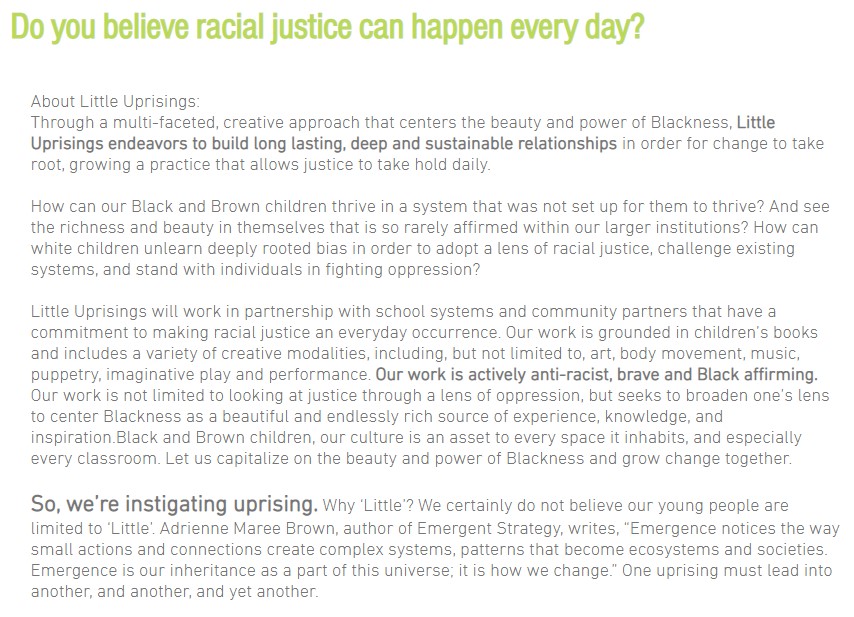
Stay Informed
